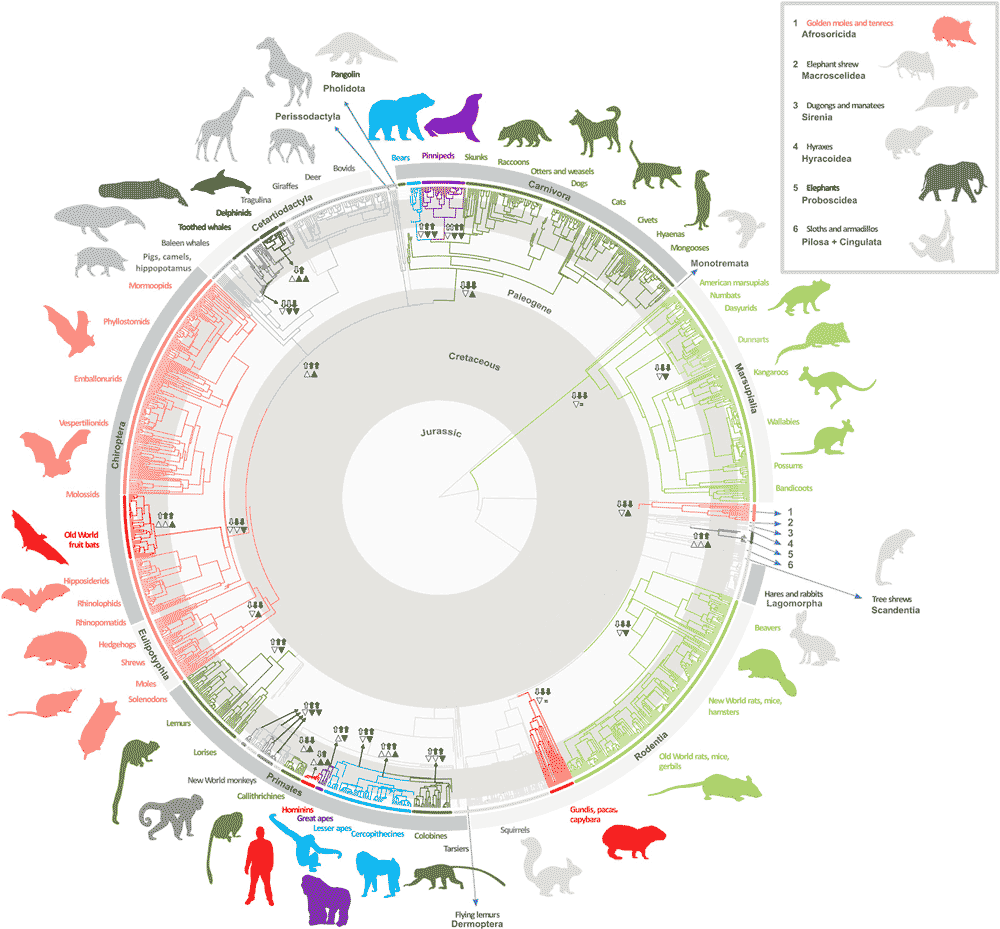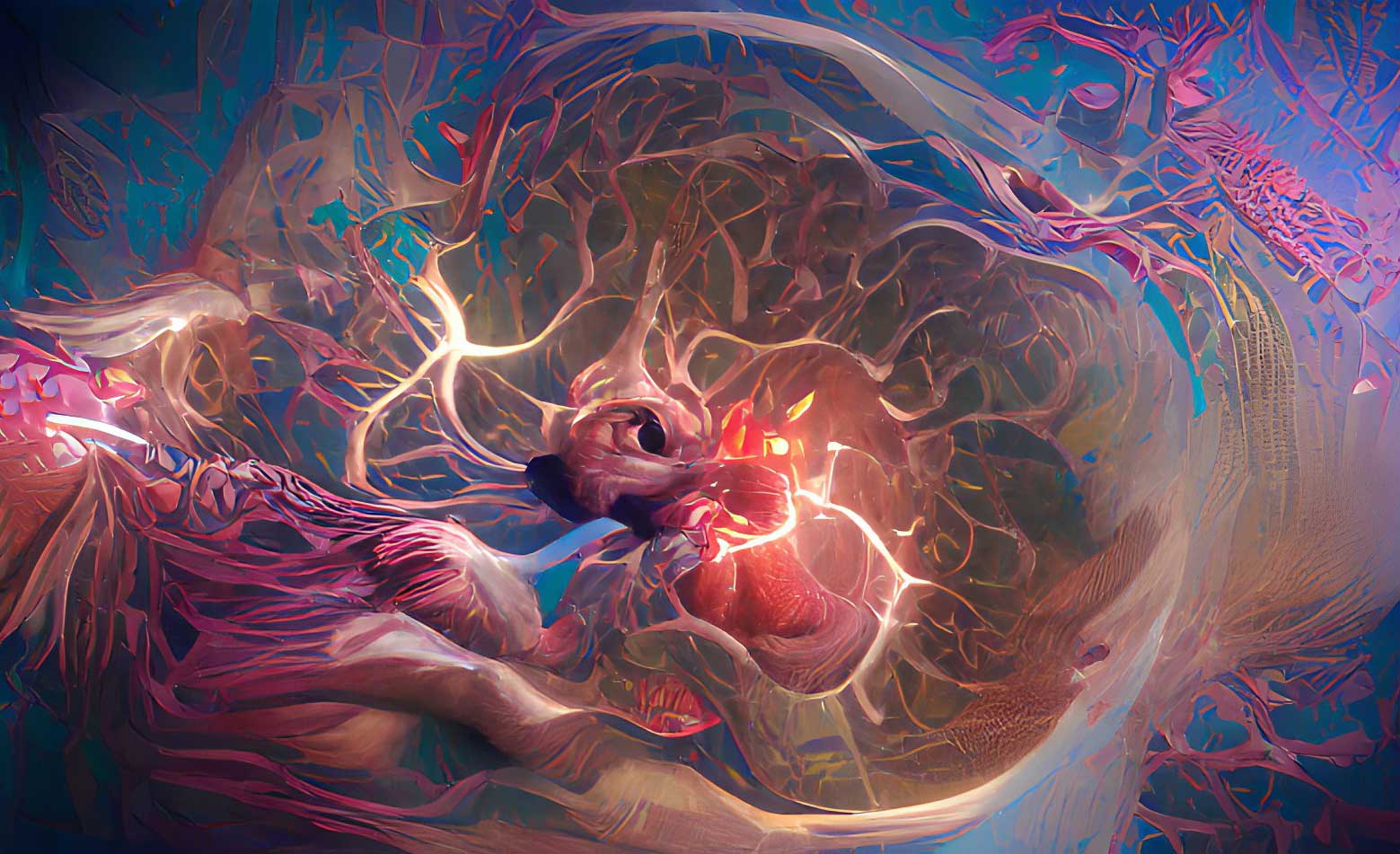Brain-body allometry revisited across mammals
Reviewing a 2021 paper in Science Advances by J. B. Smaers and coworkers, which looks at brain-body allometry across mammals.

Humans today have much bigger brains than our close living relatives among the great apes. It used to be that scientists assumed that brain evolution followed a simple pattern, with gradual increase in brain size from our early relatives like Australopithecus africanus some 2.5 million years ago. Over the last twenty years, we’ve gotten a fuller picture of the variability of ancient species in brain size. Understanding the evolution of this variability requires us to look at a broader range of mammals to see how the hominin pattern may compare to other families.
A new paper in the open access journal Science Advances finds that other branches of mammals also have more intricate patterns of brain size evolution than once assumed. (“The evolution of mammalian brain size”). Scientists have understood for more than a hundred years that brain size has a nonlinear relationship with body mass. The traditional way of understanding how brain size may have evolved differently from body mass within a species is to compare it to the entire array of brain size and body mass across all mammals. The idea is that any species or group of species might be outliers that diverge from the average because of natural selection.
But mammals are related by a hierarchical tree, and this means that treating species like a random scatter is a bad way to understand their evolution. In their new work, J. B. Smaers and coworkers consider a larger dataset of mammal brain and body masses, and use methods that enable them to navigate the tree of relationships. They find that different branches of mammals have very different constraints and patterns of brain size evolution.

Our branch, the hominins, stands out as one of two (the other is cetaceans) that seem overall to have a negative relationship of body and brain size – that is, brains got bigger across our lineage while bodies got smaller.
It’s not obvious to me that this is correct when we look across all the hominins. Instead, it looks to me like the H. erectus–“H. heidelbergensis”–H. sapiens comparison may be driving a superficial appearance that brains get bigger and bodies get smaller. Obviously bigger body size is part of the evolution of some lineages of Homo, including H. erectus and H. sapiens. My view of hominins is that both brain and body size have undergone diverse changes in different lineages. There are enough different branches of the tree that I doubt any simple pattern is going to manifest across the entire hominin group.
I think there is much more to do in understanding brain size evolution in hominins. The kind of data across the tree of mammals that Smaers and coworkers have provided will be very important to interpreting what has happened to our own lineage.
UPDATE (2021-04-30): After I posted this, I went to the supplementary data to see what they had included for hominins. As I suspected, the study relies only upon species means of body mass and brain mass for a handful of hominin species, and these means are arrayed in such a way as to support the idea of larger brains and smaller bodies in some species. So for example, Au. africanus and Au. afarensis average larger brain mass and smaller body mass than given for Pan paniscus and Pan troglodytes, and H. sapiens and H. neanderthalensis have larger brain mass and smaller body mass than reported for H. heidelbergensis.
I think a proper examination of the variation within these species and the addition of other species would probably eliminate the appearance of negative allometry in the hominins.
John Hawks Newsletter
Join the newsletter to receive the latest updates in your inbox.



